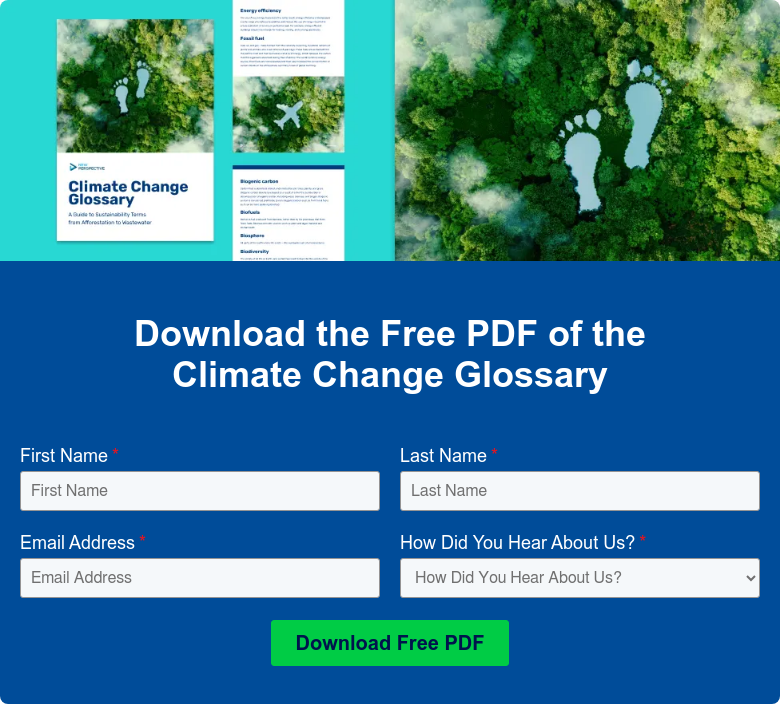How AI Can Help With Climate Change and Sustainability Challenges

As we face ongoing and increasing environmental challenges, we’ve got a new potential ally in AI. Its smart systems and machines can analyze and learn from data at speed. With the massive amount of climate data already accumulating, AI can play a vital role in accessing, understanding, and taking action.
It can help us on a massive scale — such as using satellites to monitor emissions, or on a smaller scale by making our homes more energy-efficient. It’s already changing the way we deal with climate change, pollution, and waste. While it’s not without its challenges and ethical questions, it’s all in how we harness it. Let’s take a look:
AI-Powered Platforms, Environmental Monitoring, and Data Analysis
AI can greatly improve the accuracy, coverage, and speed of data analysis, enabling us to get a deeper understanding of what's happening and make more informed decisions.
As a for-instance, consider the World Environment Situation Room (WESR). This digital platform uses AI to collect, visualize and analyze complex datasets related to the environment — gleaned from a range of sources. As it helps us gain better insights on changes in CO2 levels and sea level rise, for instance, it’s also aiming to be a hub for monitoring the overall health of our planet.
The International Methane Emissions Observatory (IMEO) is a public database of verified methane emissions that uses AI to help us monitor and reduce those emissions. By connecting this data with science, transparency, and policy, we can make more data-driven decisions on how to protect the environment.
The GEMS Global Environment Monitoring System is a network of over 25,000 air pollution monitoring stations around the world. It’s taking our understanding of air quality globally, enabling us to make strategic decisions on how it affects people's health, and how to protect them.
Renewable Energy Management and Distribution
AI plays a significant role in managing renewable energy, particularly through accurate weather forecasts. AI tools like Atmo, Jua, or IBM’s forecasting tool can analyze vast amounts of weather data — including temperature, wind speed, cloud cover, and solar radiation — to more accurately predict future weather conditions. This information is then used to optimize the operations of renewable energy systems, such as solar and wind farms, and adjust energy production accordingly.
AI can predict when there will be a surge in solar radiation or strong winds, allowing solar panels or wind turbines to generate maximum energy during those periods. This optimization helps minimize reliance on fossil fuel-based energy sources and significantly reduces carbon emissions associated with energy generation.
Smart grid systems powered by AI are also important in managing the supply and demand of renewable energy. These systems can analyze real-time data on energy consumption, production, and storage, allowing for dynamic adjustments to optimize the distribution of renewable energy. AI algorithms can identify patterns and trends in energy usage, helping to balance the load on the grid and ensure a stable and reliable energy supply.
Sustainable Agriculture and Disaster Resilience
In agriculture, AI is helping to better detect and address crop diseases. AI tools like Agribot analyze crop health and optimize irrigation and fertilization practices. AI-augmented agriculture systems like Taranis can analyze a lot of data, including weather patterns, to identify potential threats to crops at an early stage. These tools can work with drones or ground-based robots to collect data and provide real-time insights to farmers. This precision agriculture approach enables farmers to minimize waste, reduce environmental impact, and enhance resource efficiency by ensuring that resources are used only where and when they are truly needed.
Another way AI can help in sustainable agriculture is by managing water. By integrating AI tools like Aquasight with soil moisture sensors and weather data, farmers can get up-to-the-moment data on soil conditions and water requirements, and implement more precise irrigation strategies. Minimizing water usage and reducing the energy consumption associated with irrigation systems while maintaining crop health and productivity.

Environmental Footprints
Life cycle assessment (LCA) software incorporates AI algorithms to calculate the environmental impact of products over their entire lifecycle, including raw material extraction, production, use, and disposal.
Its insights help businesses and consumers make informed decisions, and can help promote sustainable practices on e-commerce platforms like Amazon.com, Shopify, or Alibaba.
One AI tool doing this now is SimaPro: users can input detailed data about a product's ingredients, manufacturing processes, energy consumption, transportation, and waste management. The AI-powered software then analyzes the data and quantifies the product's environmental footprint, including carbon emissions, water usage, land occupation, and other relevant indicators.
Having a comprehensive view of the environmental impacts associated with various choices allows users to identify areas for improvement, and compare the sustainability profiles of different options.
Transforming Cities
Picture a bustling city equipped with an "urban dashboard" — a digital hub that analyzes data on energy consumption, water availability, traffic flows, people's movements, and even weather conditions — as they happen. This treasure trove of information is a boon for city planners, allowing for a new level of urban sustainability. We’ll see more and more of this in the future.
AI's analytical prowess is pushing us to predict and address environmental challenges proactively. Once you have the information, it’s impossible not to try and harness it — for everything from managing energy consumption to combating water scarcity and optimizing transportation systems, from better-allocating resources to reducing our environmental footprint to improving how we live.
The Limitations of AI: Understanding its Drawbacks and Challenges
As with any superhero, with AI’s incredible power comes responsibility. Processing data has its own environmental consequences. The ICT (information and communication technologies) sector is responsible for about 3-4% of emissions and uses significant amounts of water to cool data centers. Fortunately, steps are being taken to reduce this impact through initiatives like the CODES Action Plan for a Sustainable Planet in the Digital Age.
E-waste poses another major concern: only 17.4% of it is currently recycled and disposed of in an environmentally responsible manner. According to the UN Global E-waste Monitor report, the amount of e-waste is projected to reach nearly 75 million metric tonnes by 2030.
On a macro level, AI needs to be applied in ways that overcome inequalities in access. It needs to be applied inclusively to have a global impact.
Transparency, accountability, and safeguarding privacy are crucial in upholding trust and encouraging adoption. By striking a balance between AI's incredible capabilities and ethical practices for its deployment, we can ensure that this extraordinary technology is a force for good — and truly leads us to a more sustainable future.
At New Perspective, we work with many AI-driven, climate-forward organizations, and we’re excited about helping them shape their future. Reach out if you want to learn more about how we can help you when it comes to achieving your sustainability and business goals.




